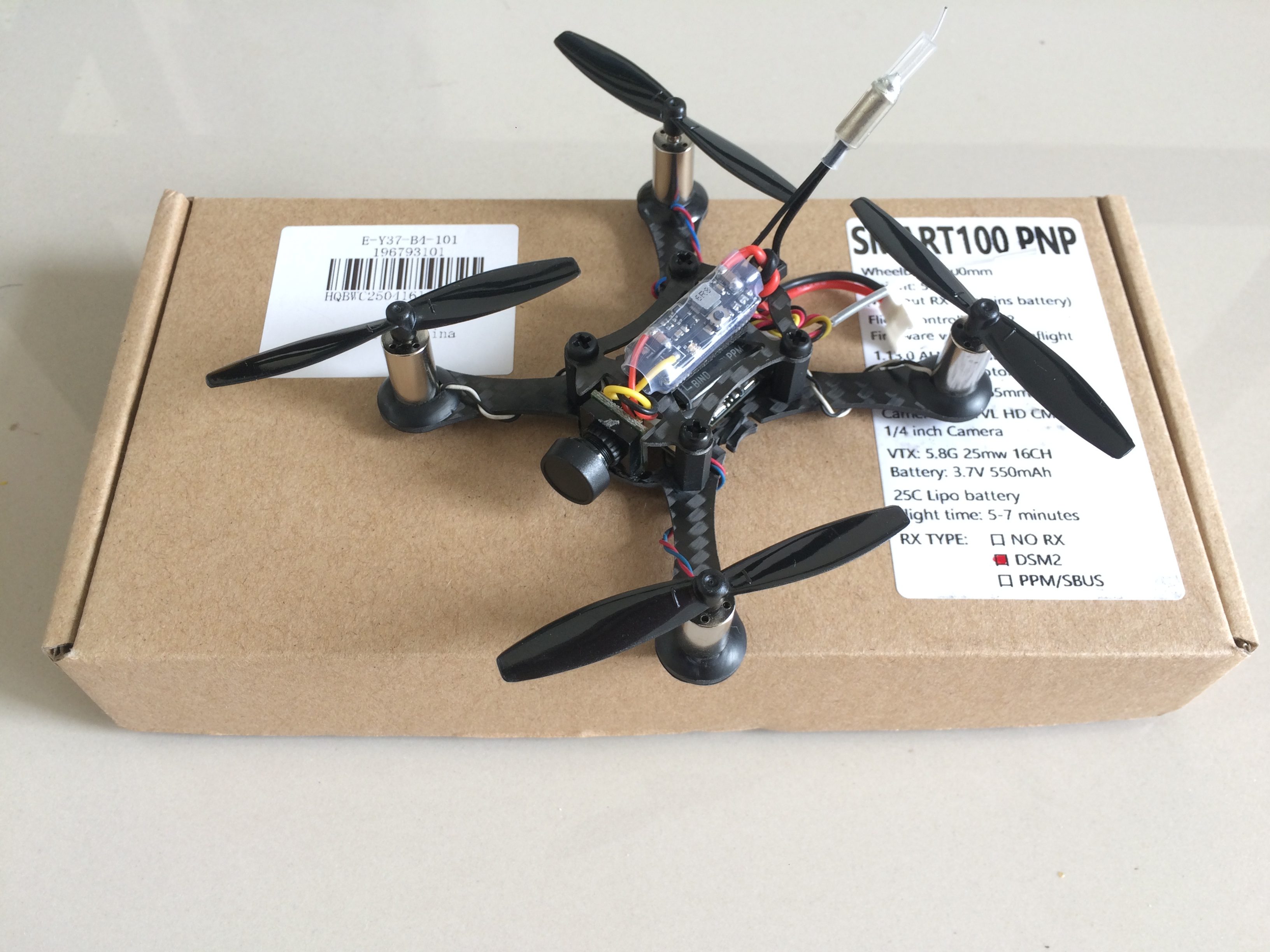 I finally build my #quadgoal: A Rakonheli 66mm brushless whoop. Read More
I finally build my #quadgoal: A Rakonheli 66mm brushless whoop. Read More
 The DSM2 RX that comes with the Kingkong Smart100 is generally regarded as garbage. It’s hard to bind with, it’s got poor range, etc. I will show that, at least in binding, it’s not completely hopeless. Here’s the step-by-step binding procedure:
The DSM2 RX that comes with the Kingkong Smart100 is generally regarded as garbage. It’s hard to bind with, it’s got poor range, etc. I will show that, at least in binding, it’s not completely hopeless. Here’s the step-by-step binding procedure:
- Plug FC to USB
- Flash NAZE firmware (NOT ALIENFLIGHTF1) — I used NAZE v2.0.0
- Set UART2 serial RX
- Save and reboot
- Set motor protocol brushed
- Set motor pwm speed separated from PID speed
- Se motor pwm frequency 32000 (or set motor_pwm_rate = 32000 on CLI)
- Set motor stop
- Set receiver serial-based receiver
- Set provider spektrum1024
- Save and reboot
- On CLI: set spektrum_sat_bind=5
- 3 for DSM2 1024bit/22ms
- 5 for DSM2 2048bit/11ms default AlienWii32
- 7 for DSMX 1024bit/22ms used by Devo 7e
- 8 for DSMX 2048bit/22ms Used by new DXe
- 9 for DSMX 2048bit/11ms
- On CLI: set spektrum_sat_bind_autoreset=0
- On CLI: save
- Unplug FC from USB
- Plug battery to quad… RX should be in bind mode (rapid flashing orange)
- Turn on TX and bind
- Unplug battery from quad
- Plug FC to USB
- Revert to ALIENFLIGHTF1 (optional)
- On CLI: set spektrum_sat_bind=0
- On CLI: set spektrum_sat_bind_autoreset=1
- On CLI: save
Now you can do other configuration you may want to do or maybe just go fly.
Hat tip to Idriz for guiding me on the procedure
Linear antennas are simple, cheap, light, durable and work well enough. They do suffer from polarization and multi-path interference. These issues are mitigated with circular polarized antennas. On the sending side, circular polarized antennas send usable signals regardless of orientation. On the receiving side, they capture polarized signals and– when using matching circular polarized antennas– drop multi-path interference leading to a cleaner picture. In the above video from Neil DeLillo, you can see this difference in actual real-world use. Here’s the full article that explains the difference in detail. Basically, it’s weight/durability vs picture quality.
Quadspex did a series of motor thrust tests that shows the power of 716  motors vs  615 motors into perspective. I’ve computed the thrust-to-weight ratios and summarized the results in the convenient table below:
| Motor | Thrust (g) | Total Thrust (g) | Thrust-to-Weight Ratio* |
| Stock 615 E010 | 7.83 | 31.3 | 1.252 |
| RS 615 16000KV | 9.3 | 37.2 | 1.488 |
| RS 615 18000KV | 11.2 | 44.8 | 1.792 |
| MMW 615 17000KV | 11.37 | 45.47 | 1.818 |
| MMW 615 19000KV | 13.03 | 52.13 | 2.085 |
| Stock 716 E011 | 17.27 | 69.1 | 2.303 |
| MMW 716 17000KV | 18.47 | 73.9 | 2.463 |
*Assumes 25g take-off weight for 615 quad; 30g take-off weight for 716 quad
Here are the complete videos:
If you haven’t subscribed to Quadspex already, make sure you do. He’s got a bunch of very informative videos.
 I wanted to build a more powerful 7mm tiny whoop I did a rebuild of my second low-profile tiny whoop build.
I wanted to build a more powerful 7mm tiny whoop I did a rebuild of my second low-profile tiny whoop build.